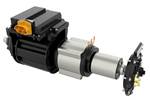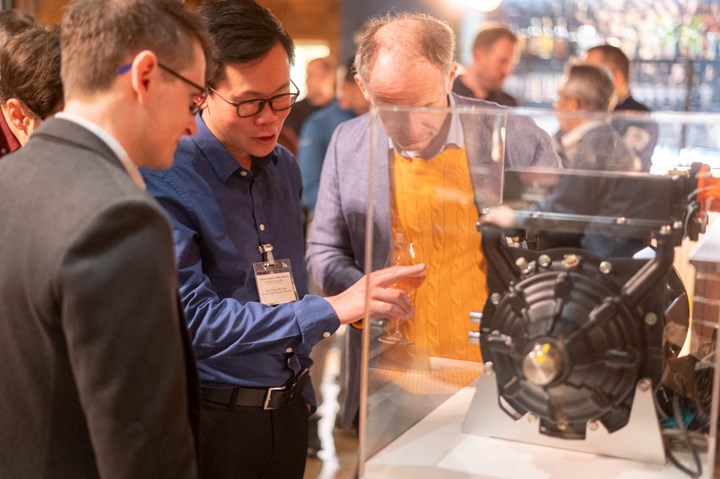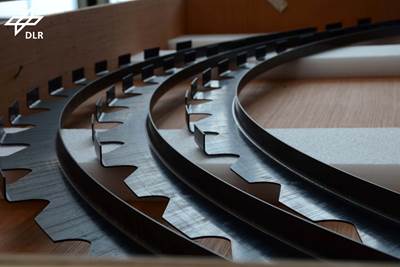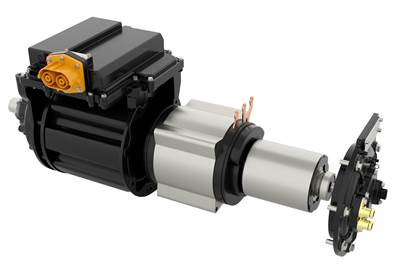Sumitomo Bakelite Europe conference highlights importance of composites for electric mobility
Composites for Future Mobility Conference attracts more than 50 delegates from OEMs, Tier suppliers and research institutions which are finding numerous composite opportunities in electric motors, UAM.
The rapid electrification of automotive powertrains and the emerging urban air mobility (UAM) market will create numerous opportunities for composites suppliers based in phenolics and epoxies. These were the key messages delivered at the Composites for Future Mobility Conference organized by thermoset plastics specialist Sumitomo Bakelite Europe (Ghent) NV (Ghent, Belgium), a subsidiary of Sumitomo Bakelite Co., Ltd. – Japan, at the end of March 2023.
The conference attracted more than 50 experts from important OEMs, suppliers and research institutes working in the automotive and aerospace industries, including Ford Motor Co., Volkswagen (VW), Mahle, GKN Aerospace, Denso Automotive, Robert Bosch, Infineon Technologies, Vitesco Technologies and the Fraunhofer Institute for Chemical Technology (ICT).
The managing director of Sumitomo Bakelite Europe (Ghent) NV, Pieter Vanderstraeten, told conference delegates, “Five years ago, we were asking ourselves whether plug-in hybrid powertrains or fully electric powertrains would become dominant in future. Today, we must ask ourselves if there is even a future for conventional powertrain technologies. The human coronavirus pandemic and the current geopolitical situation have also created a need for strong local supply chains, rather than global ones.”
These trends were obvious in the presentations from OEMs at the conference and are believed will create significant opportunities for composites. OEMs need electric motors that are more energy-efficient and power-dense than current alternatives.
VW’s team leader for process development and power electronics, Jan Winter, told conference attendees that the carmakers’ sales of electric vehicles (EVs) will surpass those of cars with internal combustion engines (ICEs) by 2030. VW is creating an entirely new platform, the Scalable Systems Platform, for all the EVs it produces across its numerous brands and is developing much of the technology for its future electric powertrains in-house.
As the presentations at the conference made clear, composites based on epoxies and phenolics will be key enabling technologies.
In particular, VW is using composites in the production of its current electric motors and Winter also sees opportunities for the strong, lightweight materials in the production of new types of motors, and for the encapsulation of power modules.
Similarly, Ford’s technical expert for E-machines, Franco Leonardi, told delegates that EVs will account for more than 50% of the carmaker’s sales by 2030. The carmaker is also using composites in the development of its rotor and stator technologies for electric motors.
The potential of composites to produce components for electrified powertrains was illustrated by two demonstrators developed by Sumitomo Bakelite and shown during the event. The first was a high-energy-density battery module with a strong, durable housing made from flame-resistant and thermal runaway-delaying phenolic molding compounds. The housing maintains its structural integrity in the event of a crash and is 40% lighter in weight than conventional alternatives. The second demonstrator was a lightweight, compact and cost-effective E-axle with a phenolic compound housing that demonstrates optimal noise, vibration and harshness (NVH) behavior, and a stator with epoxy compound insulation, encapsulation and integrated cooling that increases its power density.
According to Sumitomo, technologies such as these being developed by the automotive industry could also find use in the UAM market. Motors for electric vertical takeoff and landing craft (eVTOL) must also be light in weight, efficient and reliable (see “Composites opportunities in eVTOLs”).
Engineering manager for electric propulsion at Denso Automotive, Christoph Mueller, told the conference about the motors his company is developing for these aircraft. To reduce their weight, the company is exploring the use of composites for the production of motors and for the encapsulation of parts of the rotors and stators. Mueller said that there could be tens of thousands of eVTOLs in the air within the next decade.
Sumitomo Bakelite Europe (Ghent) NV is also experiencing change. From April this year, it will shed its previous name, Vyncolit NV, and it is adding epoxy molding compounds to the portfolio of products that it manufactures, having invested in a state-of-the-art epoxy plant at its Ghent facility.
As the presentations at the conference made clear, composites based on epoxies and phenolics will be key enabling technologies as the world transitions to a net-zero emissions economy.
Related Content
Plant tour: Airbus, Illescas, Spain
Airbus’ Illescas facility, featuring highly automated composites processes for the A350 lower wing cover and one-piece Section 19 fuselage barrels, works toward production ramp-ups and next-generation aircraft.
Read MoreNanopoxy, Nione jointly develop nanostructured epoxy resin
Epoxies featuring nanometric niobium pentoxide particles promote toughness, UV radiation resistance and other performance gains.
Read MoreComposites-reinforced concrete for sustainable data center construction
Metromont’s C-GRID-reinforced insulated precast concrete’s high strength, durability, light weight and ease of installation improve data center performance, construction time and sustainability.
Read MoreJCB Aero aircraft interior flooring panels incorporate SHD composites
High-performance carbon fiber prepreg using SHD’s FRVC411 epoxy resin system resulted in a durable, compliant design for the MRO market.
Read MoreRead Next
CW presents "CW Tech Days: Thermoplastics for large structures"
Attend this May 18th interactive webinar sponsored by Altair, Mitsubishi Chemical Group, Toray and Collins Aerospace which will explore the materials and processing technologies that are enabling the transition into thermoplastics.
Read MoreSumitomo Bakelite eAxle demonstrator drives forward novel thermoset composite material applications
The fully functional eAxle, a single, compact unit that directly powers electric vehicles, will showcase the project’s newly developed materials and assemblies and validate efficiency improvements and increased design flexibility.
Read More“Structured air” TPS safeguards composite structures
Powered by an 85% air/15% pure polyimide aerogel, Blueshift’s novel material system protects structures during transient thermal events from -200°C to beyond 2400°C for rockets, battery boxes and more.
Read More


























